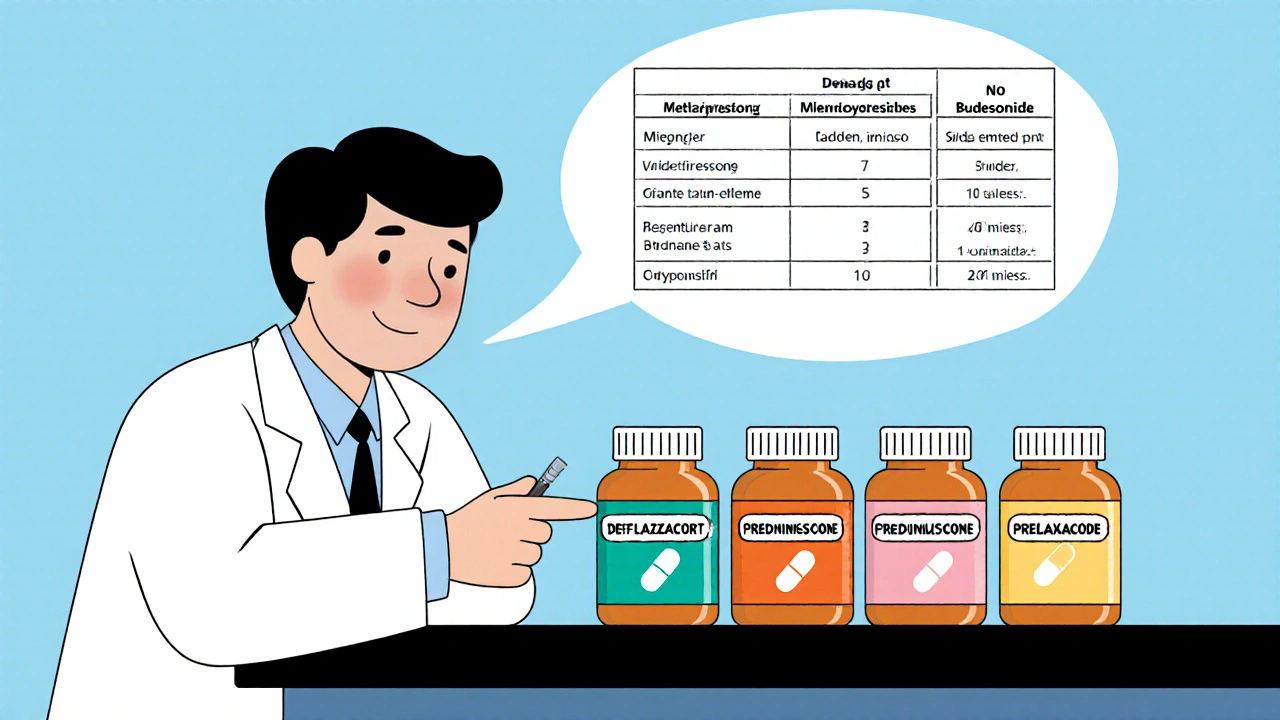Calcort: What It Is, How It's Used, and What You Need to Know
When you hear Calcort, a brand name for the corticosteroid prednisolone used to treat inflammation and immune system overactivity. Also known as prednisolone, it's one of the most commonly prescribed oral steroids for conditions like asthma, rheumatoid arthritis, and severe allergic reactions. Unlike creams or lotions, Calcort is taken by mouth, meaning it works throughout your body—not just on the skin. That’s why it’s powerful, but also why it comes with serious risks if used too long or without supervision.
Calcort belongs to a group of drugs called corticosteroids, synthetic versions of hormones your adrenal glands naturally make to control inflammation and stress responses. These aren’t the same as the anabolic steroids bodybuilders use. Corticosteroids like Calcort calm down overactive immune responses, which is why they’re used for autoimmune diseases, severe eczema flare-ups, and even some types of cancer treatment. But because they affect your whole system, they can mess with your sleep, blood sugar, bones, and even your mood. Many people don’t realize that even a short 5-day course can cause trouble if you stop suddenly—your body needs time to restart its own hormone production.
Related to Calcort are topical steroids, cream and ointment versions applied directly to the skin for conditions like psoriasis or eczema. These are safer for long-term use because they don’t enter your bloodstream as much. But if you use them too heavily or for too long, you can still get skin thinning, stretch marks, or infections—problems we’ve seen in posts about steroid damage and withdrawal. Calcort, being oral, skips the skin but hits your liver, kidneys, and metabolism harder. That’s why doctors usually start with the lowest dose possible and try to switch you to non-steroid options as soon as they can.
People often ask if Calcort is the same as other steroids like prednisone. The answer is yes—prednisolone is the active form of prednisone, meaning your body doesn’t need to convert it. That makes it a better choice for people with liver issues. It’s also cheaper than many newer anti-inflammatories, which is why it’s still widely used. But cheaper doesn’t mean safer. Long-term use can lead to osteoporosis, cataracts, high blood pressure, and even diabetes. That’s why every post about Calcort in this collection focuses on balancing benefit and risk—whether it’s comparing it to alternatives, warning about side effects, or explaining how to taper off safely.
You’ll find real-world advice here: how to avoid steroid-induced insomnia, what to eat when your blood sugar spikes, how to protect your bones while taking it, and when to call your doctor about swelling or vision changes. These aren’t theory pages—they’re from people who’ve been there. Whether you’re just starting Calcort or you’ve been on it for months, the posts below give you the practical details no pharmacy handout ever mentions.

Calcort (Deflazacort) vs Other Steroids: Detailed Comparison Guide
A thorough guide comparing Calcort (Deflazacort) with prednisone, methylprednisolone, hydrocortisone and budesonide, covering uses, side effects, potency, and how to choose the right steroid.
October 20 2025